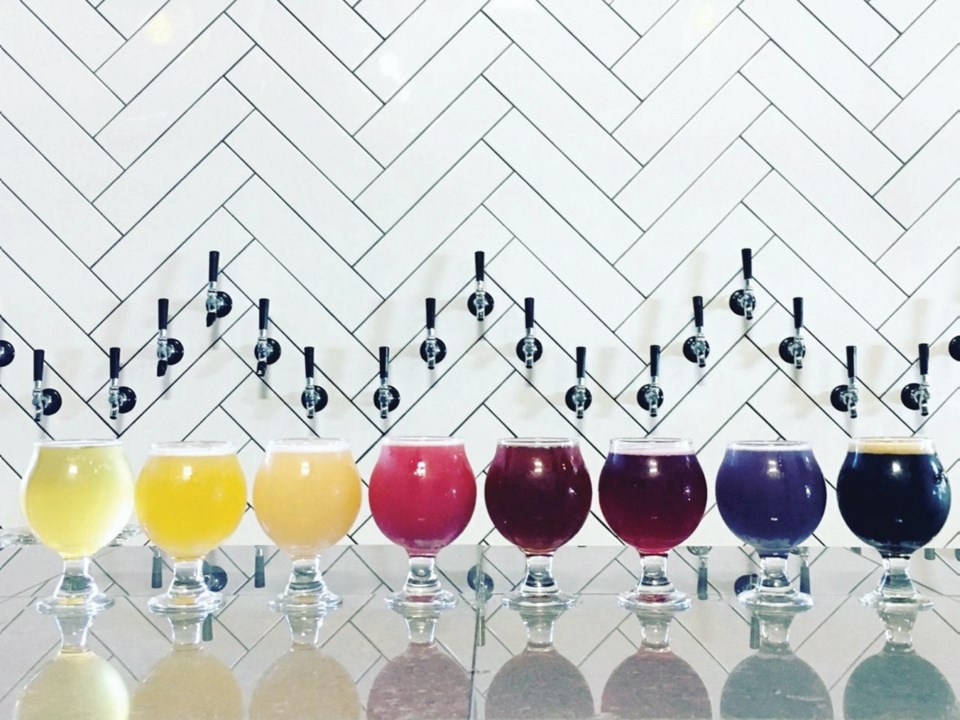Third in a series on beer by Joe Wiebe, author of Craft Beer Revolution: The Insider’s Guide to B.C. Breweries.
Sour beers are one of the most interesting and unusual craft beer trends in recent years. The idea of “sour beer” might not seem right to you — after all, beers aren’t supposed to be sour, are they? In fact, a whole subculture of sour beers has been cherished by beer lovers in places such as Belgium and Germany for centuries, and more recently, contemporary craft breweries have embraced them as well.
In Belgium, Lambic beer is made using a historic process involving cooling the beer in flat, open-air vessels known as “coolships” that allow airborne yeast and bacteria to fall into the unfermented beer. After spending a night in the open, the beer is transferred into wooden barrels, where it is aged for several months or even years, allowing different microorganisms to take turns in fermenting and adding sour acidity to the beer. In some cases, fruit might be added to the barrels later in the process, resulting in specific styles such as kriek (cherries) and framboise (raspberries). The final beers are not sweet, because all the sugars from the fruits are fermented, leaving just the essential fruitiness and colour along with a tart acidity and complexity.
The name “Lambic” comes from the town of Lembeek in Belgium, and these breweries have a protected appellation to use that name exclusively (like champagne). There are fewer than a dozen such breweries, along with a few “gueuzeries” (blenders), which take the raw beer from the lambic producers, age it in barrels themselves and blend their own so-called “gueuze.”
Other Belgian sour beer styles include Flanders red ale and oud bruin (old brown) ale, both of which are aged in giant oak vessels called foeders for several months with older, more sour vintages, then blended with younger, sweeter beer. These tend to be only slightly acidic with rich cherry, plum and raisin aromas and flavours, even though no actual fruit was included in the recipe.
Although well known for straightforward Pilsner lagers, Germany also has a sour beer tradition. Berliner Weisse is a very light (often less than 3% ABV), tart wheat beer that is traditionally served with a sweet syrup. Another German sour beer called Gose (not to be mistaken for Belgian gueuze) is tart and slightly salty.
While some North American craft breweries have taken the barrel-aging route to making sours, the process is very slow and expensive. As a result, many use a faster process called “kettle souring,” where the beer can be produced in weeks instead of months or even years.
Many B.C. craft breweries produce sour beers using either the traditional, barrel-aged method, kettle souring or a hybrid of both. Here in Victoria, several breweries make sours, including Driftwood Brewery, Vancouver Island Brewery, Lighthouse Brewing and the Moon Under Water Brewpub. Especially worth checking out is Île Sauvage Brewing, which opened on Bridge Street near Gorge Road late in 2018 with a primary focus on sours, and was named Rookie Brewery of the year at the 2019 B.C. Beer Awards last fall.
If you’re uncertain about sour beers, think about how refreshing a glass of tart lemonade or how delicious a vinegary pickle can be. The best sour beers are well balanced, so that the tart acidity doesn’t overwhelm the fruity and other “beer-y” characteristics. I find that many people who don’t think they like beer often love sour beers. It’s a great way to convert wine lovers or cocktail fanatics to beer. And sour beers often showcase beautiful colours because of added fruits.
During Victoria Beer Week, there has been an attempt to include sour beers in all events, but some events are particularly focused on them. All About the Wood (Saturday, March 7, at the Victoria Public Market) features barrel-aged beers, many of which are sours, and Pucker Up (Thursday, March 12) is a showcase of 20 sour beers from B.C. breweries split between the two bars at the Garrick’s Head Pub and neighbouring Churchill Pub. Île Sauvage is also hosting a Beer School class called Walk on the Wild Side (Wednesday, March 11) that will also feature some sour beers.
For more information about all these events, go to victoriabeerweek.com.
Joe Wiebe is the beer director for the Victoria Beer Society.



